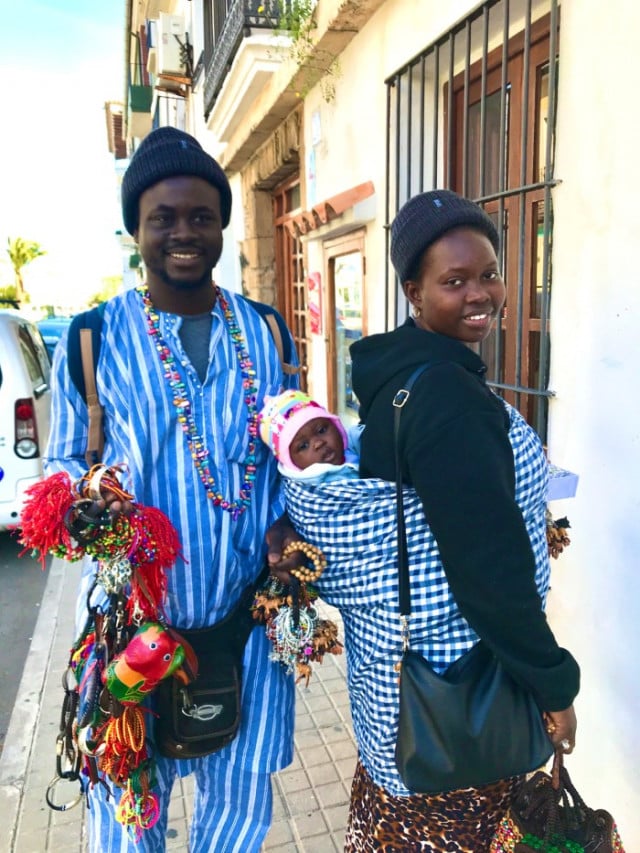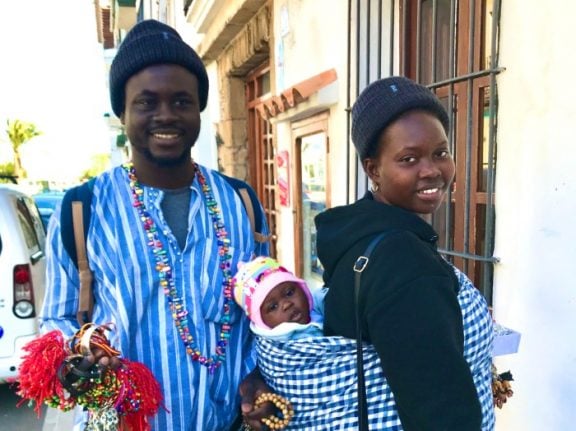The story of the heroic rescue made headlines in Spain and sparked a search to find the man who was thought to be a mantero, the term used for street vendors who sell goods such as jewellery, fake designer bags and football shirts, in public spaces on blankets (mantas in Spanish).
He rushed to the rescue of Alex, a 39-year-old who was almost bed-ridden after a long illness, scaled a wall to reach his balcony and hoisted him over his shoulder to bring him to safety.
Eyewitnesses said the man disappeared before anyone could catch his name or even say thank-you.

Gorgui scaled up the wall 'like spiderman', hoisted Alex over his shoulders and brought him to safety. Photo: Roberta Etter
READ ALSO: 'Thank you, you're a hero': Costa Blanca man saved from burning building by mystery street seller
The Local tracked him down thanks to Roberta Etter, a neighbour who raised the alarm about the fire and photographed the rescue.
She was walking through the port of Denia when she thought she saw a familiar face and approached the man who confirmed he was indeed the man involved in the rescue.
Speaking on the phone on Monday afternoon the man told The Local that his name was Gorgui Lamine Sow.
He revealed that he was an illegal immigrant who had arrived in Spain on a boat from the West coast of Africa two and a half years ago when he was just 17 years old.
“I came with nothing and I’ve been working top manta just to survive,” said Gorgui, who rents a room with his girlfriend Gana, whom he met not long after he arrived in Spain.
The pair now have a seven-month old daughter, Ndeye.

Gorgui with his girlfriend and their 7-month old daughter in Denia. Photo: Roberta Etter
“It’s a very small room in Gandia and we come every day to sell in the port of Denia,” he said. “It's true, life is hard.”
He described how last Thursday he had been walking the streets when he heard a commotion and saw smoke billowing out of a first floor window.
“I was walking past and saw a man in a window with flames all around him. People on the ground said he couldn’t walk and they couldn’t reach him.”
“I didn’t think, I just climbed up to get him.”
“It’s true that I am poor, that I don’t have money but I have a heart,” he said in Spanish. “I have a heart that wants to help people and I knew I could save him.”
“A hero? I just did what any good human would do.”
“Once I brought him to the ground and saw people were looking after him, I washed my hands at a neighbour’s house and then I left. It’s a long journey back to Gandia and there aren’t so many buses.”
Gorgui said he had spoken to the man he rescued and is glad to hear that he is out of hospital.
“He was treated for burns but is he ok now,” the 20-year-old said. “I spoke to him on the telephone and I hope we will meet again when he is back in Denia.”
READ ALSO: 'Thank you, you're a hero': Costa Blanca man saved from burning building by mystery street seller



 Please whitelist us to continue reading.
Please whitelist us to continue reading.
Member comments